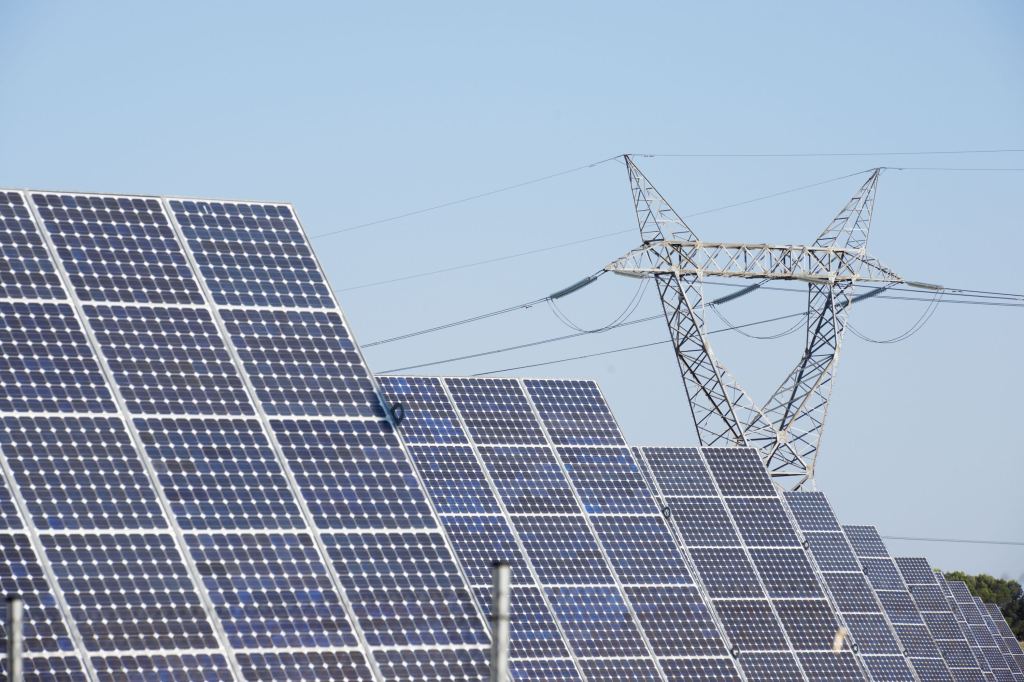The rapid expansion of artificial intelligence (AI) and cloud computing has significantly increased the demand for data centers, leading to a substantial rise in energy consumption. To address this growing need sustainably, major technology companies are increasingly turning to large-scale solar energy projects. This article explores notable solar energy agreements exceeding 100 megawatts (MW) initiated by tech giants in 2025, highlighting their commitment to renewable energy and the strategic benefits of these investments.
January 2025: Meta’s Strategic Solar Investments
Meta, formerly known as Facebook, commenced 2025 with a significant commitment to solar energy. In early January, the company entered into a 200 MW solar power purchase agreement (PPA) with Engie, a multinational electric utility company. This agreement supports a solar farm located near one of Meta’s existing data centers in Texas, reinforcing the company’s dedication to powering its operations with renewable energy. At the time of this deal, Meta’s renewable energy portfolio already encompassed over 12 gigawatts (GW) of generating capacity.
Later that month, Meta expanded its renewable energy initiatives by signing a 595 MW solar deal with Spanish renewable developer Zelestra. This substantial agreement underscores Meta’s proactive approach to integrating large-scale solar energy into its infrastructure, aligning with its broader sustainability objectives.
February 2025: Continued Momentum in Solar Commitments
The momentum continued into February, with Meta investing in a 505 MW solar project developed by Cypress Creek Renewables in Coleman County, Texas. This project, situated approximately 150 miles northwest of Austin, exemplifies Meta’s ongoing efforts to support large-scale renewable energy projects that complement its data center operations.
Microsoft also made significant strides in February by adding 389 MW of solar capacity through a deal with EDP Renewables North America. This agreement encompasses three solar farms, two located in Illinois and one in Texas, contributing to Microsoft’s commitment to achieving carbon-neutral operations. These investments are part of Microsoft’s broader strategy to power its data centers and cloud services with renewable energy sources.
Amazon joined the renewable energy movement by backing a hybrid project on the Iberian Peninsula, which includes wind, solar, and pumped-hydroelectric storage components. The deal comprises a total of 476 MW, with 212 MW dedicated to solar energy. This investment reflects Amazon’s dedication to diversifying its renewable energy portfolio and supporting innovative projects that combine multiple renewable sources.
March 2025: Google’s Landmark Solar Project in Texas
In March, Google announced its support for one of the largest solar projects in the United States, located in Buckholts, Texas. The Orion Solar Belt, constructed by SB Energy, combines three solar farms to generate a total of 875 MW of clean power. Google has committed to utilizing 85% of the project’s output to power its data centers and cloud computing services in the Dallas region, with the remaining energy contributing to the state’s grid. This initiative aligns with Google’s broader goal of bringing over 2,800 MW of new wind and solar projects to Texas, surpassing its operational energy needs in the state. The project also emphasizes the use of domestically manufactured components, supported by the Inflation Reduction Act, highlighting a commitment to local economic growth and sustainability. ([apnews.com](https://apnews.com/article/c36f18607fed2d54bd02acbd3b903b0a?utm_source=openai))
The Strategic Appeal of Solar Energy for Data Centers
The increasing reliance on solar energy by tech companies is driven by several strategic advantages:
1. Rapid Deployment: Solar farms can be developed and become operational in approximately 18 months, offering a swift solution to meet the escalating energy demands of expanding data centers.
2. Cost-Effectiveness: Solar energy has become one of the most affordable sources of new electricity generation, providing a cost-efficient alternative to traditional energy sources.
3. Scalability and Modularity: The modular nature of solar technology allows for scalable solutions that can be tailored to the specific energy requirements of data centers.
4. Sustainability Goals: Investing in solar energy aligns with corporate sustainability objectives, enabling companies to reduce their carbon footprint and contribute to global efforts to combat climate change.
Challenges and Considerations
Despite the benefits, integrating large-scale solar energy into data center operations presents certain challenges:
– Intermittency: Solar power generation is dependent on sunlight availability, leading to variability in energy production. To mitigate this, companies are increasingly pairing solar installations with battery storage solutions to ensure a consistent power supply.
– Grid Integration: The rapid expansion of data centers and their substantial energy consumption can strain existing power grids. This necessitates careful planning and collaboration with utility providers to ensure grid stability and reliability.
– Regulatory and Community Engagement: Large-scale solar projects require navigating regulatory approvals and engaging with local communities to address concerns and ensure project success.
Future Outlook
The trend of tech companies investing in large-scale solar energy projects is expected to continue as the demand for data centers grows. Innovations in solar technology, energy storage, and grid management will play a crucial role in addressing the challenges associated with renewable energy integration. Furthermore, collaborations between tech companies, renewable energy developers, and policymakers will be essential to create a sustainable and resilient energy infrastructure that supports the evolving needs of the digital economy.
In conclusion, the substantial investments in solar energy by leading tech companies underscore a strategic shift towards sustainable energy solutions to power the expanding digital infrastructure. These initiatives not only contribute to corporate sustainability goals but also drive advancements in renewable energy technologies and infrastructure, setting a precedent for other industries to follow.



